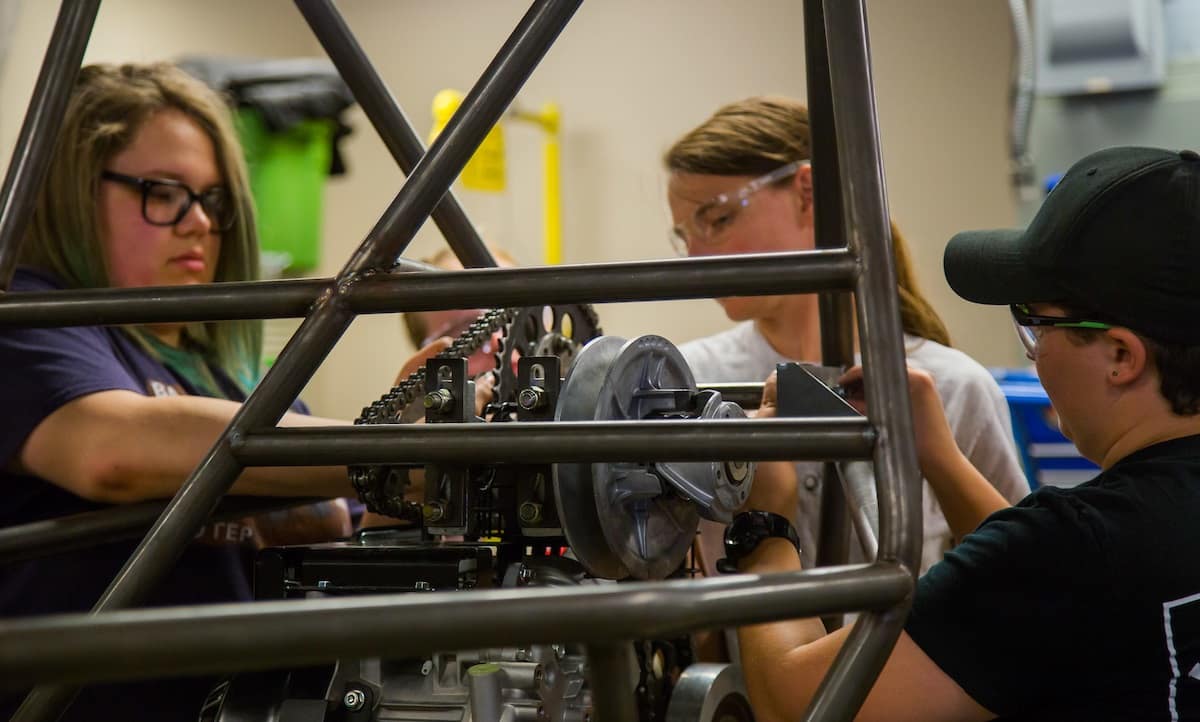All Female Off-Road Racing Team Shows Off Automotive Engineering Skills

Before Alex Mehringer was old enough to operate a car, she was driving an off-road, utility-type vehicle around her grandfather’s farm at age 9 in Indiana.
When she arrived at Embry-Riddle Aeronautical University’s Daytona Beach Campus and learned about a student competition where she could design, build and race a single-seater off-road vehicle, she was eager to join.
As president of Embry-Riddle’s Women’s Baja SAE Team, she’s ready for her fifth Baja SAE international competition on April 19 to 22 in Maryland with the team of nine students. The all–female team at the Daytona Beach Campus was founded in 2005.
Sponsored by the Society of Automotive Engineers, the competition involves dynamic events including a four-hour endurance competition, suspension test, hill climb, rock crawl, sled pull, and maneuverability challenge. Engineering design and cost analysis are also part of the competition.
While most teams in the competition are predominantly male, Mehringer, who is majoring in mechanical engineering with a concentration in high-performance vehicles, said Embry-Riddle’s team is one of only a few all-female Baja teams in the world and the longest running.
Being involved in the competition and team, Mehringer said, allows new female students an opportunity to become comfortable with design and fabrication work where they might be more hesitant on a predominately male team.
“We [the senior members of the team] work together to build their confidence so they become comfortable using basic tools while working on the vehicle,” she said.
About the size of an ATV, students in the Baja SAE competition use cutting-edge technology such as 3D CAD (computer-aided design) software and computer numerical control lathes and mills in the College of Engineering’s High Performance Vehicle Lab to design and build the buggy, which uses a 10 horsepower Briggs and Stratton engine.
For Ashlee Byron, a mechanical engineering junior, who is participating in Baja for her first year, she enjoys finding solutions to the challenges that arise.
“Working on the car and learning how to use different tools and methods of building something is incredible,” Byron said.
Master’s in mechanical engineering student MacKenzie Cunningham has been on the Baja team for six years. She’s been responsible for designing the rear and front suspension of the off–road vehicle and said being on the team is beneficial to working in the automotive industry. She’s had three internships with Tesla’s Vehicle Engineering Test group and is returning for her fourth this summer with a job opportunity when she graduates in December. She’s gained invaluable project management experience as well through Baja and the competitions, she said.
The team will arrive at the competition this month prepared for any scenario, with a tool box and trailer of spare parts from tires to sheet metal. The endurance race, held on the last day of the competition, has the vehicle jumping about 5 feet high over various obstacles, Mehringer said.
“The course is so intense that about 60 percent of the vehicles break within the first four laps,” said Mehringer, who hopes to work in the automotive industry when she graduates. “If something happens during the competition, you are out in a parking lot with whatever tools you brought.”
ABOUT THE HIGH PERFORMANCE VEHICLE LAB IN THE COLLEGE OF ENGINEERING
A design studio and two vehicle development bays make the Department of Mechanical Engineering’s High Performance Vehicle Laboratory the hub of motorsports activity at Embry-Riddle’s Daytona Beach Campus. Students have access to 10 computer workstations with the latest engineering design tools, networked to the university’s supercomputer in the design studio. In addition to housing the Formula SAE and the Women’s Baja SAE teams, the laboratory supports graduate and undergraduate research.

 Deborah Circelli
Deborah Circelli